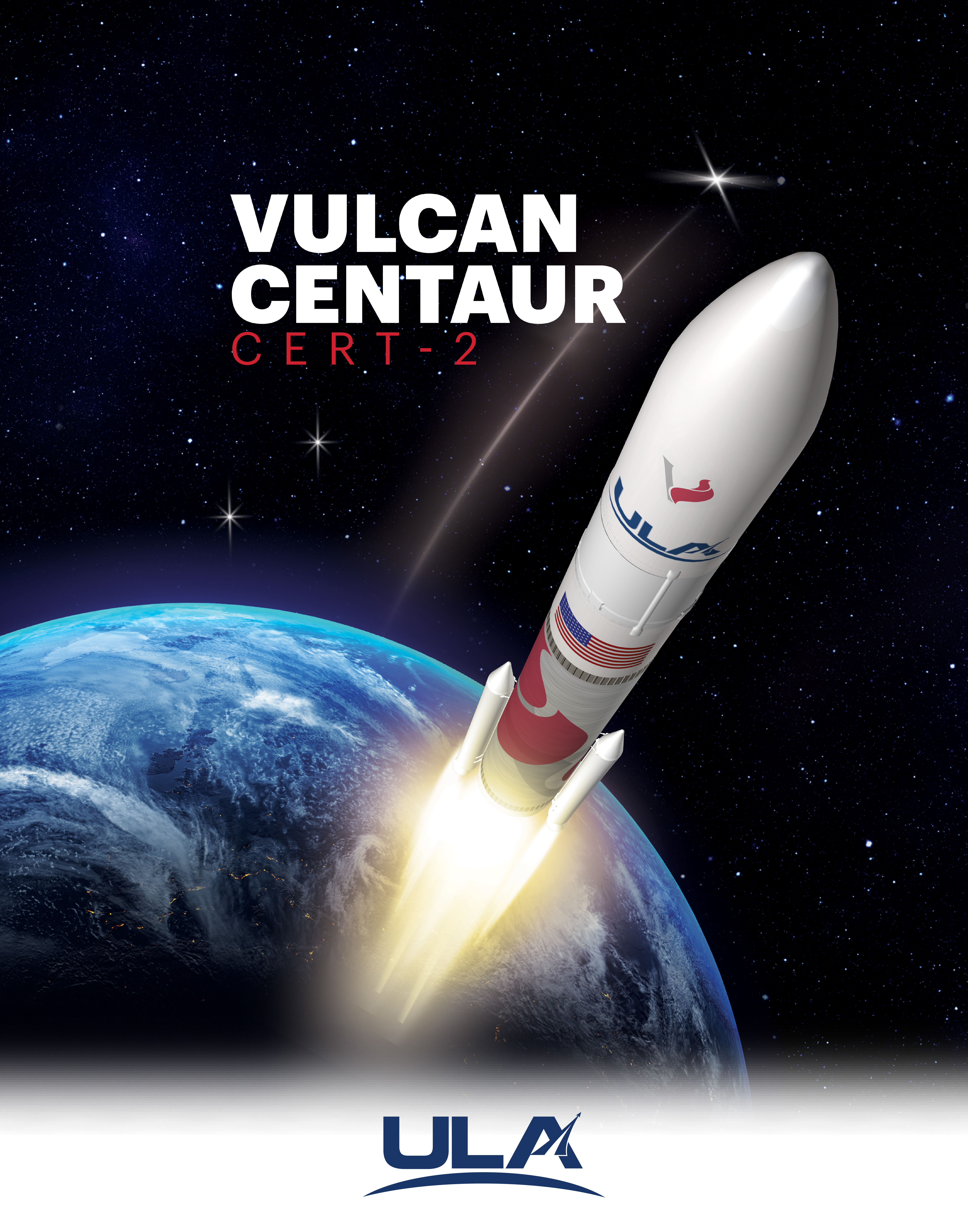Vulcan launchES second certification mission (CERT-2)
A United Launch Alliance (ULA) Vulcan VC2S rocket successfully launched the second certification (Cert-2) mission from Space Launch Complex-41 at Cape Canaveral Space Force Station, Florida. The Cert-2 mission included an inert payload and demonstrations associated with future Centaur V technologies. This was the second of two test flights required for ULA's certification process with the U.S. Space Force.
Launch Date: October 4, 2024 at 7:25 a.m. EDT (1125 UTC)
GO Vulcan! GO Centaur! GO Cert-2!
Launch BROADCAST
Live updates
Join the conversation on social media!
@ulalaunch
#VulcanRocket #Cert2
Mission Overview
A United Launch Alliance (ULA) Vulcan VC2S rocket will launch the second certification (Cert-2) mission from Space Launch Complex-41 at Cape Canaveral Space Force Station, Florida. The Cert-2 mission includes an inert payload and experiments and demonstrations associated with future Centaur V technologies.
Flight Profile
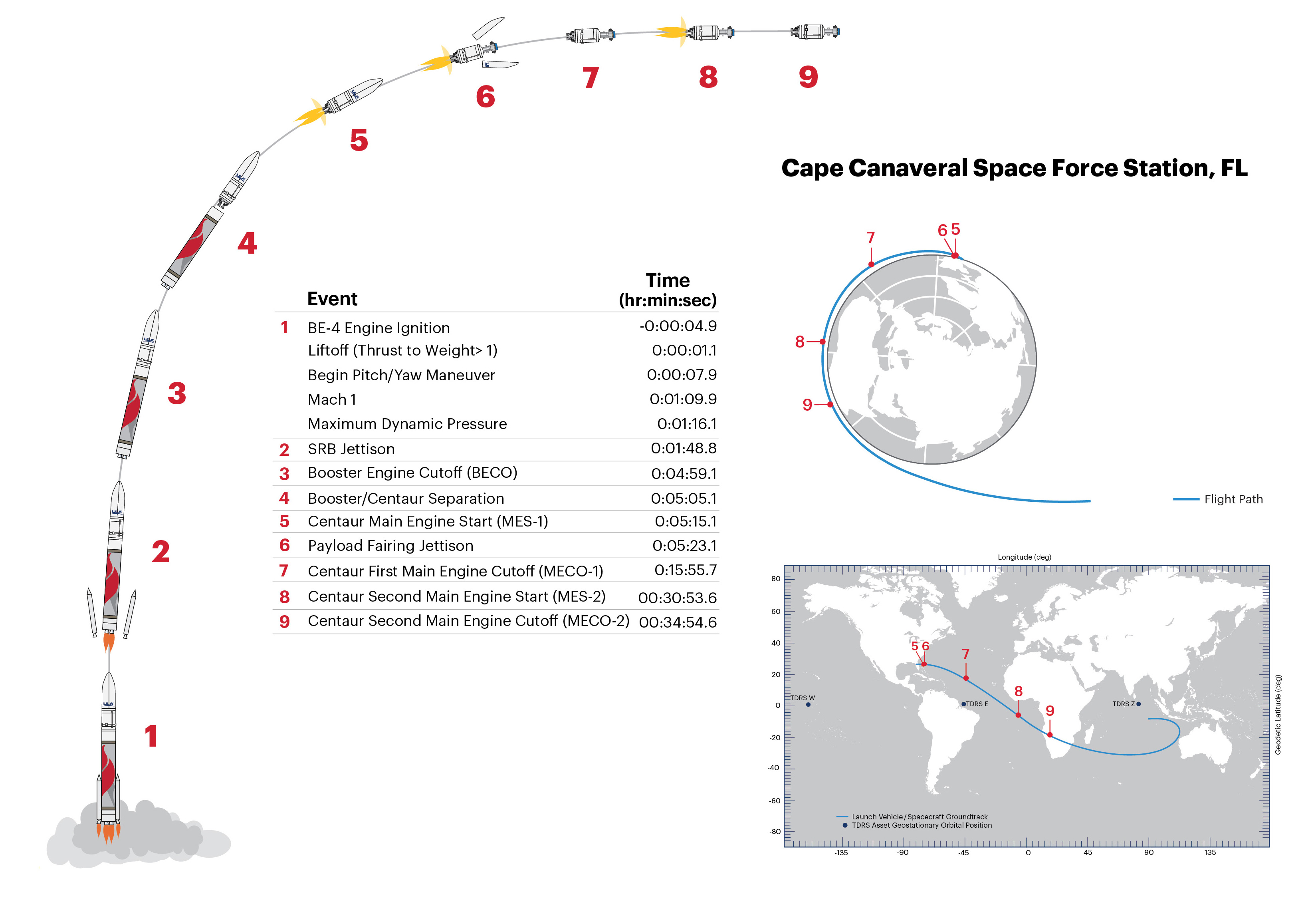
Launch Vehicle
Payload Fairing
The spacecraft is encapsulated in a 5.4-m- (17.7-ft-) diameter payload fairing (PLF), a sandwich composite structure made with a vented aluminum-honeycomb core and graphite-epoxy face sheets. The bisector (two-piece shell) PLF encapsulates the spacecraft. The payload attach fitting (PAF) is a similar sandwich composite structure creating the mating interface from spacecraft to second stage and payload fairing. The PLF separates using a debris-free horizontal and vertical separation system with spring packs and frangible joint assembly. The payload fairing is available in the 15.5-m (51-ft) standard and 21.3-m (70-ft) long configurations.
Centaur V
The Centaur V second stage is 17.7 ft (5.4 m) in diameter and 38.5 ft (11.7 m) in length. Its propellant tanks are pressure-stabilized and constructed of corrosion-resistant stainless steel. Centaur is a cryogenic vehicle, fueled with liquid hydrogen and liquid oxygen, powered by two RL10C-1-1A engines producing 23,825 pounds (106 kilo-Newtons) of thrust. The cryogenic tanks are insulated with a combination of multilayer insulation (MLI) blankets, radiation shields and spray-on foam insulation (SOFI). A fault-tolerant avionics system is mounted on an aft equipment shelf. The payload attach fitting (PAF) provides structural and electrical interfaces with the spacecraft and is mounted to the Centaur V Launch Vehicle Forward Adapter (LVFA).
Booster
The booster is 17.7 ft (5.4 m) in diameter and 109.2 ft (33.3 m) in length. The booster’s tanks are structurally rigid and constructed of orthogrid aluminum barrels, spun-formed aluminum domes with a common bulkhead. The liquefied natural gas (LNG) / methane fueled booster will be powered by a pair of BE-4 engines, each producing 550,000 pounds (2,400 kN) of sea level thrust. Two graphite epoxy motor (GEM) 63XL solid rocket boosters (SRBs) generate the additional power required at liftoff, with each providing 459,600 lbs (2,044 kN) of thrust. The Centaur avionics system, provides guidance, flight control and vehicle sequencing functions during the booster and Centaur phases of flight.
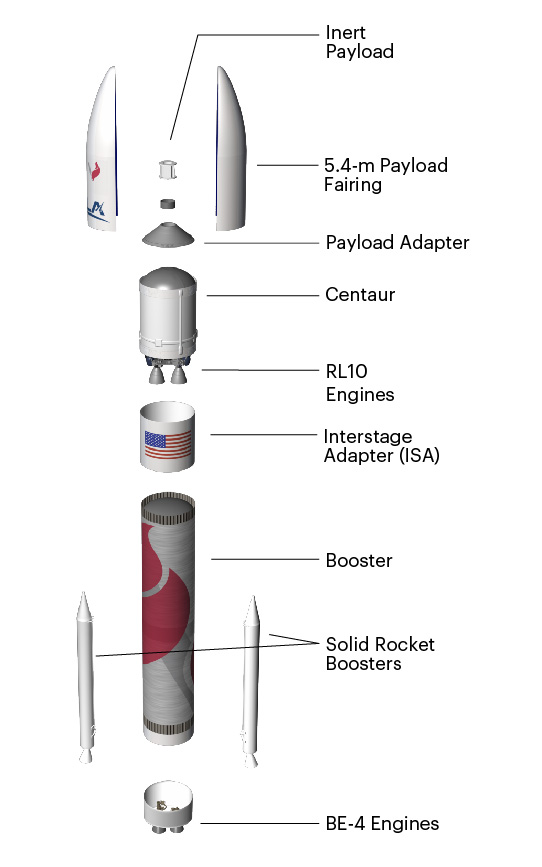
Space Launch Complex-41 // Processing
Space Launch Complex-41, the East Coast home of the Vulcan and Atlas V rockets at Cape Canaveral Space Force Station in Florida, employs a “clean pad” concept of operations to ready launch vehicles and payloads for ascent into space. The rocket elements are assembled atop a Vulcan Launch Platform (VLP) inside the Vertical Integration Facility (VIF) located adjacent to the launch pad. The platform and fully stacked Vulcan rocket then travel by rail approximately 1,800 feet northward from the VIF to the pad for the final countdown, fueling and liftoff. Complex 41 was constructed by the U.S. Air Force in the 1960s for the Titan rocket program.
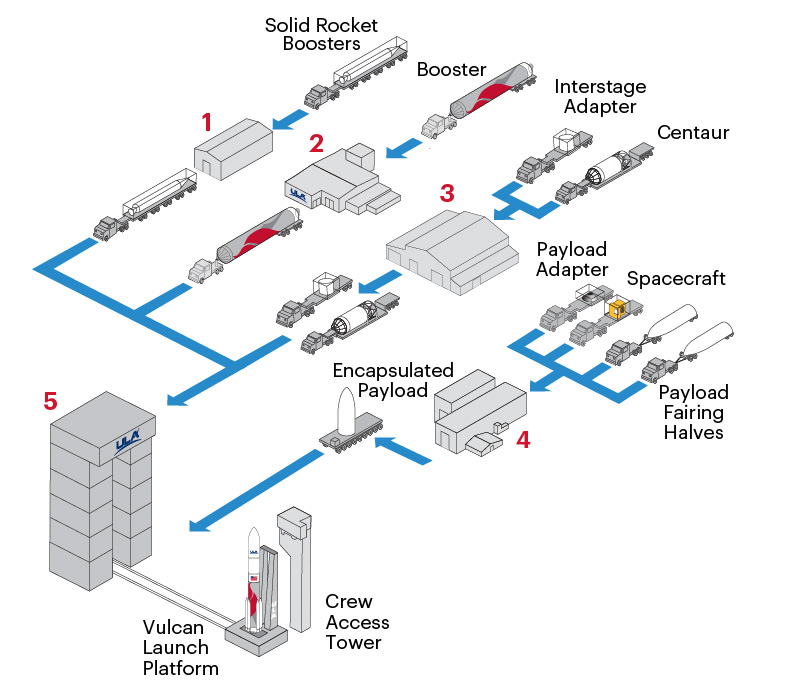
1. Segment Ready Storage (SRS) Facility
Solid Rocket Booster (SRB) Processing & Staging
2. Advanced Spaceflight Operations Center (ASOC)
Launch Control Center &
Mission Director’s Center
3. Delta Operations Center (DOC)
Interstage Adapter (ISA) &
Centaur V Processing and Staging
4. Spacecraft Processing Facility
Spacecraft Processing, Testing & Encapsulation
5. Vertical Integration Facility (VIF)
Launch Vehicle Integration & Testing,
Spacecraft Mate & Integrated Operations
Production
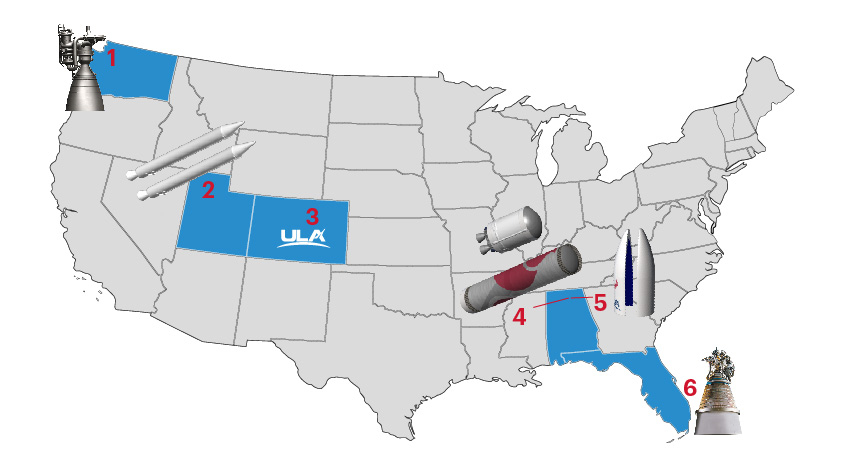
1. Kent, Washington
BE-4 Engine Fabrication at Blue Origin
2. Magna, UT
Solid Rocket Booster Fabrication at Northrop Grumman
3. Denver, CO
ULA Headquarters & Design
Center Engineering
4. Decatur, AL
Booster Fabrication & Final
Assembly, Centaur Tank
Fabrication & Final Assembly
5. Decatur, AL
5.4-m Payload Fairing
Fabrication at Beyond Gravity
6. West Palm Beach, FL
RL10C-1-1A Engine Fabrication at Aerojet Rocketdyne


